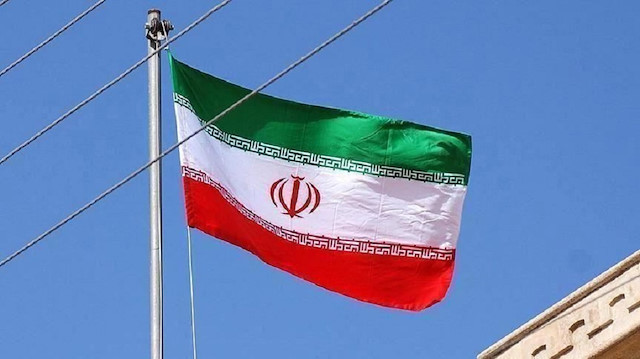
Incident sparks outrage in Tehran, draws strong condemnation from government, military officials
Iran has registered its protest with the International Civil Aviation Organization (ICAO) over the interception of an Iranian passenger plane by US military jets, terming it a “clear violation of international law and aviation standards” and demanding an “immediate probe.”
In a statement on Friday, Iran’s Civil Aviation Organization said details of the incident would be released after review of the technical data from the flight and information collected from Syrian aviation authorities.
The Beirut-bound flight of Iran’s privately-owned commercial airline Mahan Air was intercepted by two US F-15 planes in Syrian airspace late on Thursday.
The plane, which had taken off from Tehran, was flying over Syria’s At Tanf region when it was “dangerously approached” by the US fighter jets, forcing the Iranian pilot to sharply lower the altitude, reports said.
An Iranian journalist on board the plane said the jets came within 100 to 200 meters of the Iranian passenger airliner.
Many passengers on board Flight 1152 of Mahan Air sustained injuries, said a statement from Iran’s Civil Aviation Organization.
After a safe landing in Beirut, a decision was made to return the plane to Iran early on Friday, it added.
The plane made its way back to Tehran in the early hours of Friday and was received by senior Iranian aviation officials at the Imam Khomeini International Airport, reports said.
The incident has sparked anger and outrage in Tehran, drawing strong condemnation from government and military officials.
Foreign Minister Javad Zarif took to Twitter on Friday afternoon to criticize what he said was “harassment” of a “scheduled civil airliner – endangering innocent civilian passengers.”
Laya Junaidi, the Iranian president’s deputy for legal affairs, said in a statement that the US’ action constituted a “clear violation of aviation security” and will lead to legal proceedings in the ICAO Council, as well as the International Court of Justice.
Iran’s Minister for Roads and Urban Development Mohammad Eslami termed the incident a “terrorist act” and urged the international community to “condemn the toxic move.”
Takht Ravanchi, the Iranian envoy to the UN, will be submitting an official protest letter to the UN chief and the UNSC, government officials said on Friday.
Earlier, Ravanchi spoke to UN chief Antonio Guterres, warning that the US would bear responsibility if there was any other incident with the plane on its return to Tehran from Beirut.
In its first reaction early on Friday, Iran said it will take “necessary political and legal measures” after the investigation is concluded.
Foreign Ministry spokesperson Sayed Abbas Mousavi said an investigation was underway to understand what happened after the Mahan Air flight had taken off from Tehran.
Commenting on the issue, Alireza Manzari, Iran’s former envoy to ICAO, said the US' move was a “violation of the Convention on International Civil Aviation,” also known as the Chicago Convention, the semi-official Fars News Agency reported.
He said that since the incident took place in its airspace, Syria is entitled to take the plane’s black box to extract details for the investigation.
Early reports speculated that the fighter planes belonged to Israel, but Tel Aviv was quick to deny any involvement in the incident.
It later emerged that two US Air Force fighter jets had flown past the Iranian passenger plane, one from above and the other below.
In a statement on Friday, the US Central Command (CENTCOM) termed it a “standard visual inspection.”
“A US F-15 on a routine air mission in the vicinity of the CJTF-OIR At Tanf garrison in Syria conducted a standard visual inspection of a Mahan Air passenger airliner at a safe distance of approximately 1,000 meters from the airliner this evening,” read the statement.
“The visual inspection occurred to ensure the safety of coalition personnel at At Tanf garrison. Once the F-15 pilot identified the aircraft as a Mahan Air passenger plane, the F-15 safely opened distance from the aircraft.”
The “professional intercept,” CENTCOM spokesperson Capt. Bill Urban said, was conducted “in accordance with international standards.”
The At Tanf desert garrison is situated on the strategically important Baghdad-Damascus highway and has housed US forces since 2016.
According to the International Crisis Group, several incidents in recent months underscore the military garrison’s potential as a “flashpoint” between US forces and Iranian-backed forces in its vicinity.
Hello, the comments you share on our site are a valuable resource for other users. Please respect other users and different opinions. Do not use rude, offensive, derogatory, or discriminatory language.
The floor is all yours.








